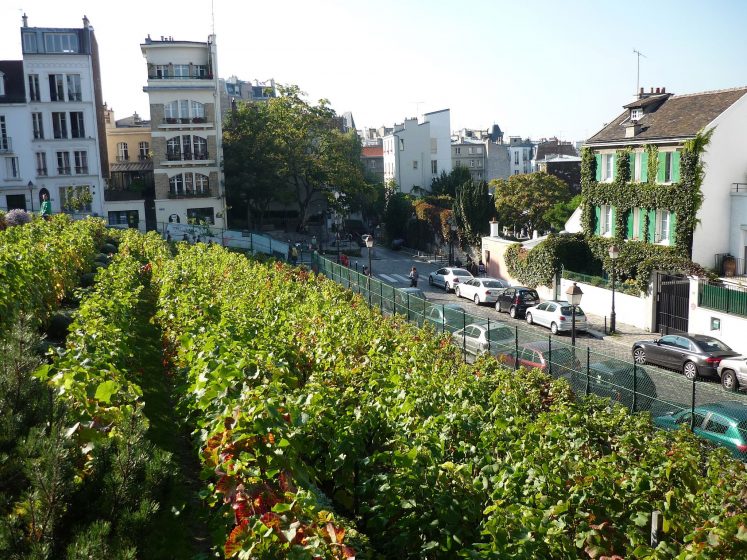The Basic Principles Of City Blooming
The Basic Principles Of City Blooming
Blog Article
Not known Details About City Blooming
Table of ContentsThe Definitive Guide for City BloomingThe City Blooming StatementsNot known Factual Statements About City Blooming The 45-Second Trick For City BloomingSome Of City Blooming
Fascinated in growing food for sale in the City of Chicago? Below is a checklist of regularly asked questions regarding the policies and policies that cultivators must take into consideration when intending an urban agriculture task.
The zoning modification does not customize any type of various other codes managing composting, structure authorizations, acquiring or leasing City had residential property, service licenses or environmental contamination. There are existing codes that manage these problems and they remain in full impact and may be relevant to your project. Area yards are typically owned or handled by public entities, civic organizations or community-based companies and maintained by volunteers.
Urban ranches grow food that is planned to be offered, either on a nonprofit or for-profit basis. Due to their business function, urban ranches require a business license. Yes. An area yard is allowed to market excess create that was expanded on website if the sales are accessory or secondary to the yard's primary purpose described above.
Indicators on City Blooming You Should Know
Composting is permitted yet just for plant product that is produced and made use of on site. The amount of garden compost product can not exceed 25 cubic lawns at any type of given time according to the criteria in 7-28-715 of the City's Municipal Code. Yes. Because the soil at many new yard websites needs modifying, compost, dirt, wood chips, or other products can be gotten to build or boost the growing room - City gardening.

If a structure authorization is called for after that the hoophouse will be thought about an accessory structure. You can locate out more about the building license demands by contacting the Department of Structures. The 25,000-square-foot dimension limit is planned to avoid a solitary neighborhood garden from dominating an offered block or diminishing the block's existing property or commercial character.
The restriction does not put on gardens situated in Public Open Room (POS) districts. Can there be greater than one area garden that is 25,000 square feet on a single block? Yes. The size restriction uses to specific yards, not to specific blocks. No. Secure fencing is not called he has a good point for, however, gardens that have large car parking locations might be needed to install fencing or various other landscaping functions.
Facts About City Blooming Uncovered
B1 & B2 areas call for that all commercial usage activities be performed indoors. Is fencing needed for urban ranches? Fencings may be required, along with landscape design and screening, for specific car park areas and outside job or storage space areas depending on location and the certain activity taking place.
Yes. Urban ranches call for building authorizations and zoning approvals prior to construction. Other kinds of city evaluation may be called for depending upon particular frameworks, tasks, size, landscaping, licensing, public health and stormwater administration issues. Many of these requirements are recognized in the task layout or permitting process, however, the applicant may be accountable to independently recognize specific licenses or permits that may be required.
Yes. The sort of permit is figured out by what is occurring at the website. The Department of Company Matters and Customer Security can assist establish the details kind of service permit that's needed. Yes. Off street car park is required for most business projects in Chicago. The required variety of garage is based on the variety of workers working with website and not the square video of the growing area.
Facts About City Blooming Uncovered

Yes. A city ranch can market garden compost material created on site, however, the operation must abide with the policies in 7-28-715 of the Chicago Municipal Code. Yes. Aquaponic systems are allowed indoors on city farms in numerous zoning areas. Nevertheless, a zoning testimonial and structure license is called for in order to set up structures or systems and a company license is required as defined above.
Up to 5 hives or swarms of honey bees may be maintained as an accessory usage. Beekeepers should register with the Illinois Department of Agriculture. For more details regarding the suggested zoning amendment you might speak to the Department of Real Estate and Economic Growth, Bureau of Preparation and Zoning at 312.744.8563.
Farming in cities and urban locations A metropolitan ranch in Chicago. Urban agriculture refers to various methods of growing. https://soundcloud.com/cityblooming, processing, and dispersing food in city locations. The term also puts on the area tasks of pet husbandry, tank farming, beekeeping, and gardening in an urban context. Urban agriculture is identified from peri-urban agriculture, which occurs in country areas beside suburbs.
The 7-Minute Rule for City Blooming
, that look for to create social networks started on a common ethos of nature and community holism. These networks can create by method of official institutional assistance, coming to be incorporated right into neighborhood town preparation as a "change town" movement for sustainable city advancement.
Some of the very first evidence of metropolitan farming comes from Mesopotamia.
Report this page